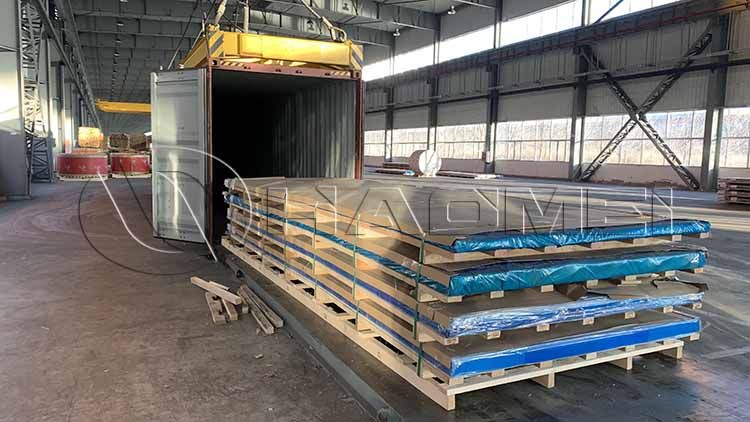AA5059 5083 Aluminum Sheet Properties and Uses
Because aluminum is light, corrosion-resistant and strong, its use in ship hull structures can significantly reduce the weight of the ship, lower the center of gravity and increase the load. And with the advancement of aluminum alloy metallurgical processes and welding methods, it has become the mainstream of advanced marine materials.
Marine aluminum alloys can be divided into two types according to their uses: hull construction and outfitting. Each ship has different aluminum alloy choices according to its detailed design and mission requirements.

Aluminum alloys suitable for use in ship structures include 5086, 5083, 5383, 5456 and aa5059. ts main alloying element is Mg, and the strength increases with the increase in Mg content. At present, 5083, 5086, and 5456 are more common in China. Among them, 5083 and 5086 are plates commonly used by commercial ships such as general merchant ships, fishing boats, and transportation ships, while 5456 is mostly used for trenching on the upper floors of warships.
In addition, 5383 and 5059 are modified aluminum-magnesium alloys of 5083 and 5456. Their compositions mainly add Zr and Zn elements, and reduce the impurity content of Si and Fe to enhance corrosion resistance.
After homogenization annealing, machining and heating, the 5383 aluminum alloy ingot is hot-rolled using a 2800mm quadruple reversible hot rough rolling mill, rolled to 5.0mm by a 2800mm quadruple reversible hot finishing mill, and then fully annealed in an annealing furnace.
The amount of cold rolling deformation has no significant impact on the spalling corrosion of 5383 alloy. Under the cold deformation condition of 9% to 55%, the spalling corrosion resistance and intergranular corrosion resistance of 5383 alloy can meet the corrosion performance requirements of marine aluminum alloys.
The cold deformation of the H321 temper of 5383 aluminium sheet should be controlled at 25%, and the stabilizing heat treatment temperature should be controlled at 220°C. After 90 minutes of stabilizing heat treatment, the material can obtain better overall properties.
5059 aluminum alloy is currently recognized as the most technically difficult high-end marine aluminum alloy in the industry. Compared with the traditional 5083 aluminum alloy, the impurity Si and Fe content of the 5059 aluminum alloy is slightly higher, and the Mn content is also slightly higher. The average mass fraction of Mg is 24% higher than that of the 5083 aluminum alloy. Zn is an impurity in the 5083 aluminum alloy.
In 5059 aluminum alloy, it is an alloying element. 5059 aluminum alloy contains w (Zr) = 0. 05% ~ 0.25%. Due to these differences in composition, all properties of 5059 aluminum alloy are better than those of 5083 aluminum alloy. However, due to the high magnesium content of 5059 aluminum alloy, its pressure processing performance and formability are slightly inferior.
Typical mechanical properties of 5059 aluminum alloy:
1. Tensile Strength: 280-340 MPa
2. Yield Strength: 250-290 MPa.
3. Elongation: 8-12%.
4. Hardness: 100-130 HB (Brinnell hardness).
5. Shear Strength: 190-240 MPa
6. Flexural Strength: 350-440 MPa
Original Source:https://www.marinealu.com/a/aa5059-5083-aluminum-sheet-properties-and-uses.html
Tags: 5059 aluminum ,